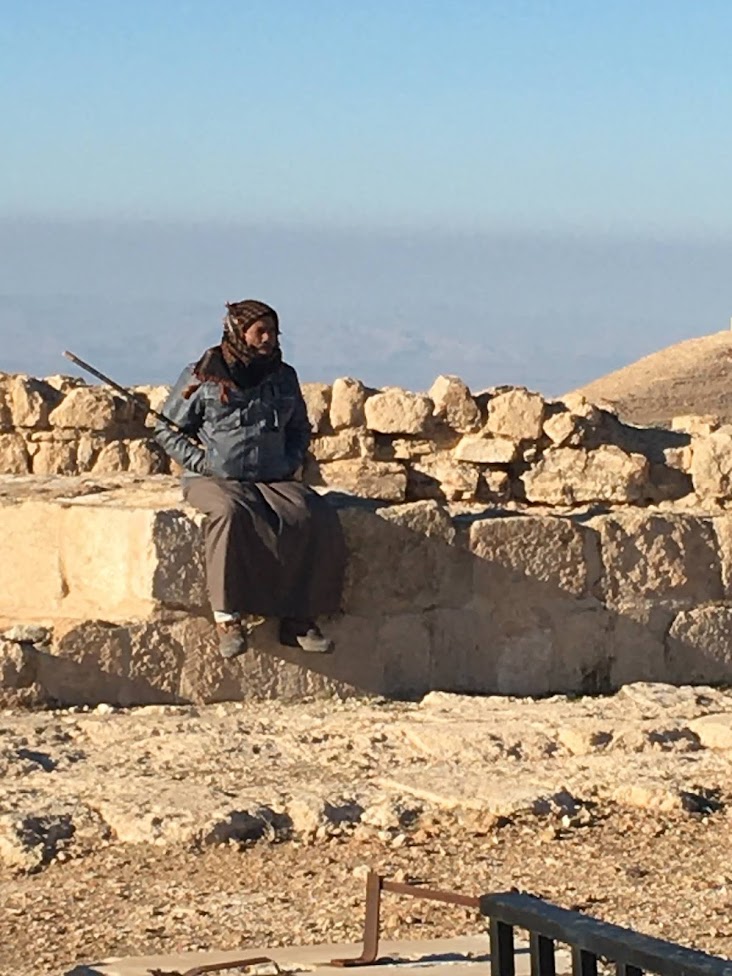The fortress Machaerus was originally built by the Hasmonean king, Alexander Jannaeus (104 BC-78 BC) in about the year 90 BC, serving an important strategic position. Its high, rocky vantage point was difficult to access, and invasions from the east could be easily spotted from there. It was also in line of sight of other Hasmonean (and later Herodian) citadels, so other fortresses could be signaled if trouble appeared on the horizon. Nevertheless, it was destroyed by Pompey's general Gabinius in 57 BC, but later rebuilt by Herod the Great in 30 BC to be used as a military base to safeguard his territories east of the Jordan.
Upon the death of Herod the Great, the fortress was passed to his son, Herod Antipas, who ruled from 4 BC until 39 AD. It was during this time, at the beginning of the first century AD, that John the Baptist was imprisoned and beheaded at Machaerus.
After the deposition and banishment of Herod Antipas in 39 AD, Machaerus passed to Herod Agrippa I until his death in 44 AD, after which it came under Roman control. Jewish rebels took control after 66 AD during the First Jewish Revolt. Shortly after defeating the Jewish garrison of Herodium, the Roman legate Lucillus Bassus advanced on Machaerus with his troops and began siege in 72 AD. An embankment and ramp were created in order to facilitate Roman siege engines but the Jewish rebels capitulated before the Roman attack had begun. The rebels were allowed to leave and the fortress was torn down, leaving only the foundations intact.
(Wikipedia)







No comments:
Post a Comment
Thanks for adding your thoughts and comments- they are greatly appreciated.